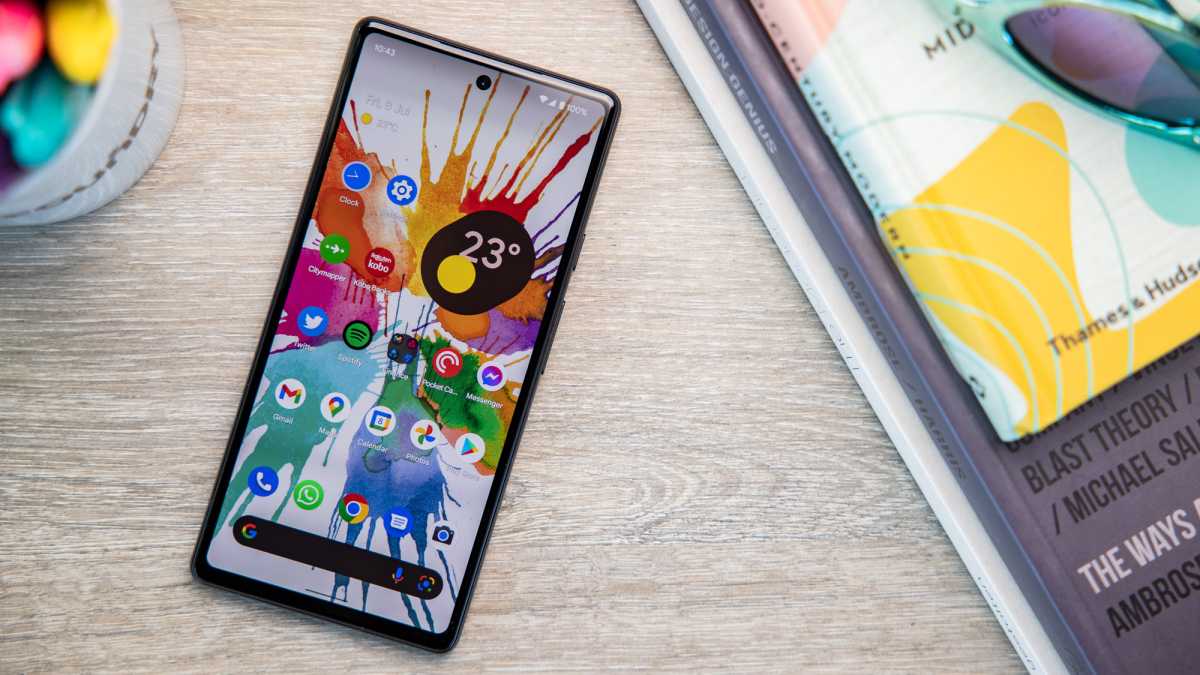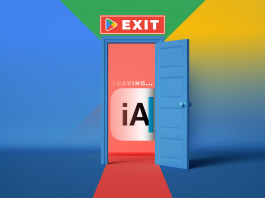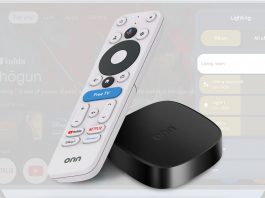Apple doesn’t make budget phones. The closest thing you can find is the iPhone SE–updated roughly every other year and starting at $429. In the Android world, there are lots of budget phones, where a brand new model is $300 or less. They’re not bad, but most people would be happier with something “mid-range,” and that’s where Google’s Pixel a-series phones come in.
Google’s newest budget phone is the Pixel 6a, easily the most comparable thing in the Android world to the iPhone SE: It’s a mid-range phone made by the same company that makes the software ecosystem in which it operates, and with a price of $449 it costs nearly the same. Our sister site TechAdvisor reviewed the Pixel 6a and loved it, saying it “crams in the best bits from the more expensive Pixel 6 and 6 Pro at a very attractive price.” So if you have between $400 and $500 to spend on a phone, which should you pick? Let’s compare the differences.
iPhone SE vs. Pixel 6a: Design and display
Apple and Google have very different design philosophies for their mid-range phones. Google tries to make its phone fully modern, mimicking the aesthetic of its more expensive siblings with an edge-to-edge display and under-display fingerprint scanner. The iPhone SE takes a years-old iPhone body, complete with oversized bezels and Touch ID home button, and replaces the insides with the latest iPhone processor. Here’s how the two differ in size and weight:
iPhone SE: 5.45 x 2.65 x .29 inches, 5.09 ounces
Pixel 6a: 6.0 x 2.8 x .35 inches, 6.3 ounces
The Pixel 6a is considerably larger and heavier but has a much larger display at 6.1 inches compared to the paltry 4.7 inches of the iPhone SE. The old Touch ID design and large bezels of the iPhone SE are really holding it back, here: Apple’s newer designs fit a lot more display into a body this size (for example, the iPhone 13 mini is physically smaller but has a much greater screen area). The Pixel 6a is comparable in size, weight, and screen area to a regular iPhone 13.
Google incorporates an in-display fingerprint scanner, so the display goes right to the edges like iPhones with Face ID. Many users were unhappy with the slow response of the in-display sensor on the Pixel 6 and 6 Pro, but Google is using a different sensor with the 6a. Reports are mixed, with some saying it’s far faster and more reliable, and others not seeing much difference. Whichever the case, the sensor on the iPhone SE is extremely fast and reliable.
Both phones come in three colors. The iPhone SE is available in Midnight, Starlight, and Product(red). The Pixel 6a is available in Sage, Chalk, and Charcoal. In other words, you get a very dark grey, very light white, and either green or red.
Our take: Those who prefer smaller and lighter phones will appreciate the iPhone SE, but that big-bezel design and home button are just antiquated, and cost you a lot of viewable screen space.
iPhone SE vs. Pixel 6a: Processor, specs, and battery
This year’s Pixel 6a is quite different from the Pixel 5a last year, namely in that it uses Google’s own Tensor processor instead of Qualcomm’s midrange chip. The latest iPhone SE is essentially an iPhone 8 from 2017 with the latest A15 processor inside. Here’s how the specs break down:
iPhone SE
- Processor: A15 Bionic
- RAM: 4GB
- Storage: 64GB/128GB/256GB
- Battery: 2018mAh
- Charging: Lightning, 18W
- Connectivity: 5G (sub-6GHz only), Wi-Fi 6
- Water/dust resistance: IP67
- OS: iOS 15 currently, iOS 19 likely
Pixel 6a
- Processor: Google Tensor
- RAM: 6GB
- Storage: 128GB
- Battery: 4410mAh
- Charging: USB-C, 18W
- Connectivity: 5G (sub-6GHz only*), Wi-Fi 6 and 6E
- Water/dust resistance: IP67
- OS: Android 12 currently, Android 15 guaranteed
Google’s Tensor processor is the same one found in the Pixel 6 and 6 Pro, but doesn’t come close to the A15 in either CPU or GPU performance. Apple’s chips are basically twice as fast. (Tech Advisor recorded a 2745 multi-core score in Geekbench 5 while the Phone SE posted 4713).
Don’t let the Pixel’s higher RAM and battery numbers fool you, either: iPhones are well known for doing a lot more with less in those areas. Given that battery life is one of our chief complaints with the iPhone SE (though the 2022 model is improved over the awful 2020 model), we wouldn’t be surprised if the Pixel 6a lasted longer. Most reviews are complimentary about its battery life, with Tech Advisor calling the battery life “excellent.”
Both phones supports 5G, but only sub-6GHz networks. (Verizon in the U.S. will sell a version of the Pixel 6a for $499 that supports mmWave 5G.) You also don’t get wireless charging with the Pixel 6a.)
Our take: Looking through TechAdvisor’s benchmarks in its Pixel 6a review, it’s clear that Apple is still running circles around Google, performance-wise. But we couldn’t get through a whole day without charging the iPhone SE, and most reviewers say the new Pixel easily gets through the day and then some. Do you want “fast enough” with decent battery life, or “super fast” with disappointing battery life? At least you can choose between three different storage amounts with the iPhone SE (64GB, 128GB, and 256GB). The Pixel 6a is only available with 128GB.
iPhone SE vs. Pixel 6a: Camera
Apple and Google both put an emphasis on the cameras of their most affordable phones. You sh expect the same quality as you get in the flagships that cost twice as much, but these are not cut-rate $400 cameras, either:
iPhone SE
Front: 7MP front camera, ƒ/2.2
Rear: 12MP Wide, ƒ/1.8, OIS
Pixel 6a
Front: 8MP front camera, ƒ/2.0
Rear: 12.2MP Wide, ƒ/1.7, OIS
Rear: 12MP Ultrawide, ƒ/2.2
Google’s in the lead here with an extra 12MP ultra-wide camera that has a 114-degree field of view. It also supports Dark mode, Google’s equivalent to Night mode–which is missing from the iPhone SE. So for most shots, the iPhone SE will perform quite well. Without night mode, it struggles quite a bit in low light.
Our take: The Pixel 6a has better hardware, and Google’s image processing and features are top-notch for still photography. Without doing a head-to-head comparison, we think the Pixel 6a is likely the better phone for taking still photos, but Apple’s video quality is unmatched.

The Pixel 6a looks like a modern smartphone.
Dominik Tomaszewski / Foundry
iPhone SE vs. Pixel 6a: The real difference
Of course, hardware and features lists only tell one part of the story. The real reason to pick one over the other is because of their ecosystems. Android vs. iOS. Google vs. Apple. Siri vs. Google Assistant. Far more than any of the hardware differences, these are the considerations that will tell you which phone you’ll enjoy more.
If you use a Mac or an iPad, you’ll appreciate the seamless way the iPhone works together with them. If you want an Apple Watch, you pretty much have to get an iPhone. If AirPods are your thing, you’re going to love the way they work with Apple’s gear, while they’re just another pair of bluetooth earbuds when used with Android phones.
But if you live in the Windows world or use Google software and services all the time (Gmail, Maps, Assistant/Home, Chrome), you’re going to find a good Android phone, particularly a Pixel, more delightful.
Your phone is no longer an island unto itself. Its a part of, maybe the center of, a whole digital life. The way it meshes with the other parts of your digital life is the greatest feature of all.
iPhone SE vs. Pixel 6a: Conclusion
Both of these phones offer tremendous value, but in different ways. They both offer smooth performance and excellent cameras. Apple’s got a much faster processor, but an older design with a smaller display and only one rear camera.
If the Apple vs. Google ecosystem is of no concern to you, it’s hard to look at what’s on offer here and not think that the Pixel 6a is the better overall phone. No, it’s not nearly as fast as the iPhone SE, but it’s still plenty fast for its price. Its modern design with edge-to-edge display makes a huge difference, and the camera is fantastic with top-notch processing along with an extra ultra-wide rear camera. The battery life is longer, too.
We’ve said it before, but Apple made a misstep when it re-used the iPhone 8 body in the latest iPhone SE. The original iPhone SE in 2016 used an iPhone 5S, meaning it reached back 2.5 years. The second-gen iPhone SE in 2020 used the iPhone 8 body, again 2.5 years old. Now the third-gen model, introduced in 2022, is using that same 4.5-year-old design, and probably won’t be updated for another two years.
iPhone users would be better served if the next iPhone SE (probably coming in 2024) used the iPhone 13 design, by then 2.5 years old. Instead of emphasizing the latest A-series processor, Apple can use the previous generation processor (then the A16) to help it stay affordable. This would likely make it faster than any other Android phone in its price range, and the big improvements to display, camera, and battery that go along with the newer body and design would make for a much better overall experience.



